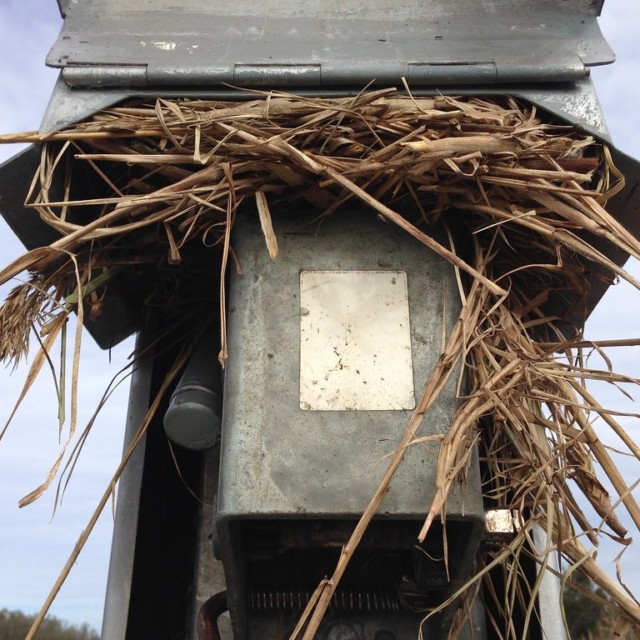What does a rat nest look like?
Rustling sounds, evidence of gnawing, the presence of droppings, damage and, of course, sightings can all be signs that rats have made their way into your property. Are they merely visiting, though, or have they moved in?
If you’re unsure what a rat nest looks like, where to find it or how to distinguish it from other animals’ nests, read on. Our comprehensive guide will help you work out whether these rodents have made your property their home, as well as giving you some top tips on rat nest removal.
Overview of rat nesting behaviour
Rat nests serve far more purposes than simply sleep. Rats use their nests to bring up their young. These nests also serve as places to hide if rats feel threatened, as well as for storing scavenged food.
Because these nests are used for so many important reasons, rats choose their locations with care. The nesting spots are always in warm and safe places. They also tend to be close to sources of both food and water, as rats don’t like to travel far from their nesting spots.
But what does a rat nest look like?
Physical characteristics of a typical rat nest
What does a rat nest look like? Well, it will vary depending on where you find it, and the materials the rodents have available. Generally, though, a rat nest is a big ball of mixed materials, measuring around 18 inches in diameter, with a coarsely woven appearance.
Their aim is to create somewhere that’s as warm, cosy and safe as possible. Inside the nest you may find stored food – or even baby rats, depending on the season.

Frequent nesting locations in homes and buildings
Rats can choose nesting locations either indoors or outdoors.
Indoors, it’s always worth checking attics: these are often infrequently visited by humans and are filled with nesting materials like insulation. They are also able to access basements through pipework and build their nests in between the contents, while cavity walls – filled with insulating materials and easy access to various parts of the building – are also a common choice.
Outdoors, rats love sheds, garages and other outbuildings. Again, these places have less human footfall than other locations and plenty of places to hide a nest away out of sight. You may even find them in gardens: inside compost heaps, underneath decking and sheds, in overgrown areas and even in underground burrows, in the case of brown rats. Gardens often offer great sources of food, water and nesting materials – such as these.
Materials rats use to construct their nests
The types of materials used in rat nests will depend on what they have access to. Generally, they’ll use soft materials that will give both warmth and comfort, and that can easily be woven into their ball-shaped nests.
This includes things like shredded paper and cardboard, fabric scraps (which they may rip from clothing and furnishings), insulation materials and plant materials.
Sometimes, though, you’ll find more unique materials – especially in urban rat nests. Old tissues, the pages of newspapers, discarded rubbish – even wires can be used to create their safe havens.
How to differentiate rat nests from other animal nests
One thing that can sometimes prove a challenge is determining what sort of nest you have found. Without knowing which creature has built a particular nest on your property, it’ll be tricky to know exactly which pest control services are needed.
Sometimes rats can nest in the eaves of a building, so what does a rat nest look like compared with that of a bird? The answer is that while birds generally use twigs and leaves to build their nests, rats will use a wide range of materials that are generally softer and cosier. The same goes for squirrels, who will normally use natural outdoor materials and shy away from manmade substances.
Rat nests tend to be larger than mouse nests – and rat nests are often neater and in areas that are harder to reach.
The presence of a rat nest generally indicates that you have rats on their premises. Even if the nest is empty, they are creatures of habit and will often return to the same nesting site – even if it has been disturbed before. If there are droppings or a strong urine smell around the nest – or if you see or hear rats nearby – it suggests that the nest is still very much active.
Rats are very territorial and may scratch or bite if you disturb them, not to mention the risk of illness or disease from their urine, droppings and contaminated materials. Rat nest removal is best left to the professionals, who will not only get rid of the nest but also prevent rats from nesting in the same spot again.
Rat nest removal
Every rat pest control situation is different, which is why we at Pest Stop Boys will tailor our recommended solutions to your exact needs. When you call us we’ll always aim to be with you within 24 hours – if not before – fully assessing the situation to establish the best way forward.
We work within the CRRU UK code of practice, which means that we will always consider non-toxic options, which are safe to be used around children and pets, as our first port of call.
Our rat pest control solutions include not only rat nest removal and ridding your property of any rodents that are already there but also proofing against them returning. We can identify and proof outdoor entry points, as well as find even the hardest-to-reach areas inside your property that may appeal to rats and prevent their entry.
We aim to eliminate your rat pest control issues during our first visit, but we can also offer ongoing proofing services if needed. Get in touch to find out more about how Pest Stop Boys can help!

